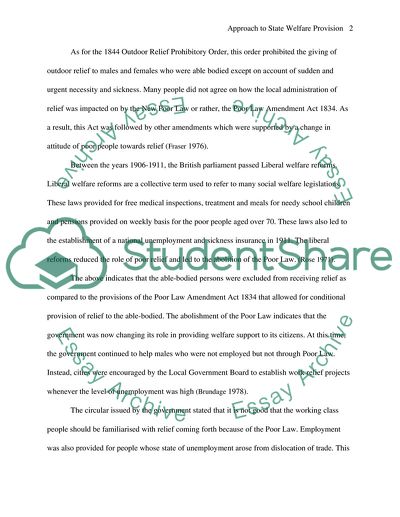Cite this document
(“Compare the approach to state welfare provision in the period Essay”, n.d.)
Retrieved from https://studentshare.org/health-sciences-medicine/1581203-compare-the-approach-to-state-welfare-provision-in-the-period-1906-1911-with-that-of-the-poor-law-amendment-act-of-1834-in-england-britain-what-were-the-main-reasons-for-this-change-of-approach
Retrieved from https://studentshare.org/health-sciences-medicine/1581203-compare-the-approach-to-state-welfare-provision-in-the-period-1906-1911-with-that-of-the-poor-law-amendment-act-of-1834-in-england-britain-what-were-the-main-reasons-for-this-change-of-approach
(Compare the Approach to State Welfare Provision in the Period Essay)
https://studentshare.org/health-sciences-medicine/1581203-compare-the-approach-to-state-welfare-provision-in-the-period-1906-1911-with-that-of-the-poor-law-amendment-act-of-1834-in-england-britain-what-were-the-main-reasons-for-this-change-of-approach.
https://studentshare.org/health-sciences-medicine/1581203-compare-the-approach-to-state-welfare-provision-in-the-period-1906-1911-with-that-of-the-poor-law-amendment-act-of-1834-in-england-britain-what-were-the-main-reasons-for-this-change-of-approach.
“Compare the Approach to State Welfare Provision in the Period Essay”, n.d. https://studentshare.org/health-sciences-medicine/1581203-compare-the-approach-to-state-welfare-provision-in-the-period-1906-1911-with-that-of-the-poor-law-amendment-act-of-1834-in-england-britain-what-were-the-main-reasons-for-this-change-of-approach.


